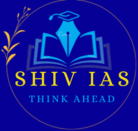Syllabus: GS3/Environment
News Source: TH
- As per a recent study, Pansy Plants (Viola arvensis) growing near Paris have evolved themselves to produce less nectar, showing signs of self-pollination instead of depending on Pollinators.
What are the Key Facts about Field Pansy?
- The Field Pansy (Viola arvensis), is a common wildflower that can be found in many parts of Europe, Asia, and North America.
- It is a member of the angiosperm plant family, which produces seeds enclosed in what is known as a fruit for protection. Angiosperms rely on insects and other animals to pollinate them and help them reproduce.
What are the Key Highlights of the Study?
Rapid Evolution
- The study marks the first evidence of rapid evolution in plants, with the field pansy, showing significant changes in nectar production and flower size over a relatively short period.
- The study found that flowers of the wild pansy variety produced 20% less nectar and were 10% smaller.
Self-Pollination:
- The field pansy has evolved to self-pollinate, reducing its reliance on pollinators due to a decreasing availability of insects.
- This behaviour is contrary to the conventional reliance on insects for pollination in angiosperms, marking a significant departure from established plant reproductive strategies.
Convergent Evolution:
- The study reveals convergent evolution across populations, with a reduction in rewarding traits and attractiveness to pollinators.
- This convergence suggests a consistent evolutionary response to environmental pressures across different plant populations.
Resurrection Ecology Method:
- The researchers used the “resurrection ecology” method, planting seeds from the 1990s and 2000s against their contemporary descendants from 2021 to observe changes over time.
- This method allowed them to track and compare changes in plant traits and behaviour across different periods.
Environmental Impact:
- The move towards selfing may benefit plants in the short term but poses a threat to their long-term survival, especially in the face of climate change and other environmental changes.
- Self-pollination reduces the genetic diversity and adaptability of the plant, making it more susceptible to diseases and environmental stresses.
Pollinator Decline:
- The study warns of a potential feedback loop that could lead to further declines in pollinators as a result of plant trait evolution, impacting the plant-pollinator network.
Urgent Analysis:
- The study emphasizes the need to analyze whether these results are symptomatic of broader behavioral changes in the relationship between angiosperms and their pollinators.
- Researchers call for a thorough understanding of the possibility of reversing the process and breaking the eco-evolutionary-positive feedback loop to preserve plant-pollinator networks.
What is Pollination?
- Pollination is the act of transferring pollen grains from the male anther (reproductive organ) of a flower to the female stigma (reproductive organ).
- Plants can be:
- Self-pollinating – the plant can fertilize itself; or,
- Cross-pollinating – the plant needs a vector (a pollinator or the wind) to get the pollen to another flower of the same species.
- Pollinators: Organisms that facilitate the transfer of pollen from the anthers to the stigmas of flowers, leading to fertilization and the production of seeds.
- Example: Bees, butterflies, beetles, moths, wasps.
Major Concerns of Self Pollination
- Reduction in the Genetic Diversity among the plant species, make more susceptible to diseases and pests.
- Self-pollination reduces the adaptability by limiting the introduction of new genetic traits in the ecosystem.
- Self-pollination may lead to the expression of deleterious mutations or harmful recessive traits.
- Like in pansy species, pollinators may enter a loop where plants producing less nectar enable less food availability, driving them towards declines.
Why Pollinators are declining?
- Urbanization, agricultural expansion, and changes in land use destroyed their populations.
- The widespread use of chemical pesticides, herbicides & GMOs have impacted a lot.
- Invasive species and Climate change Impacts
| Do You Know? – The waggle dance is a fascinating behavior exhibited by honeybees to communicate information about the location of food sources, such as nectar and pollen, to other members of the hive. – This dance was first studied and described by Austrian ethologist Karl von Frisch, who was awarded the Nobel Prize in Physiology or Medicine in 1973 for his contributions to the understanding of the honeybee’s communication system. |
